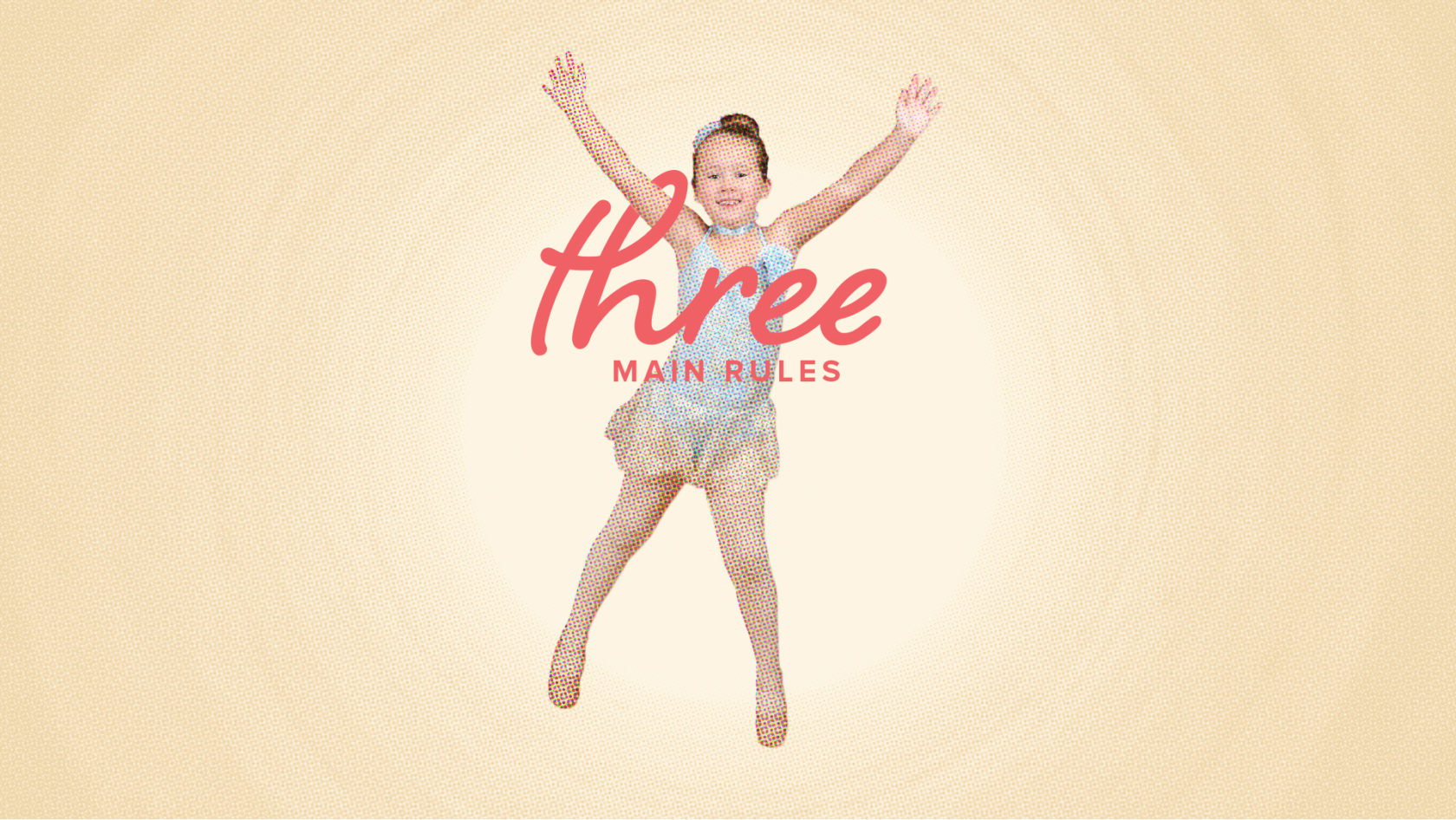For little dancers:
RULE #1: You must bend your knees before and after the jump.
RULE #2: You must stretch your legs and feet in the air.
RULE #3: You must hold your body still while jumping.
These are the three rules I teach my younger dancers about jumping. I realize these rules don’t apply to all jumps every single time. Clearly, legs are not always stretched in the air and often times the body is not held still while jumping. But these three rules provide a good base for teaching little ones how to jump safely.
And safety is the priority.
But as we all know, you can say the rules over and over and over again. It doesn’t mean the kids will ever follow the rules. Rules tend to be stifling as it is. The trick is to get them excited about these rules. To help them see the rules as tools that help ballet dancers look like they are flying effortlessly.
Here Is How I Do It
Objective: Introduce Sauté with Feet Together
- Story Build — I create some story that will get them excited to do sauté. Whether that is talking about popcorn, asking them how kangaroos move about, imagining the floor is a trampoline, etc. The goal is to get them super excited to jump. Which is pretty easy because most little kids love to bounce about. But I do try to get everyone on the same page with the same story so we are following the same directions.
- Ask To See Them Jump — I give them full reign to jump about. This will clue me in how far along they are with their coordination skills and it will show me how they approach their jumping. Do they travel when they jump? Do they jump fast? Do they jump with straight legs? Do they put their arms somewhere specific? All of these clues are helpful to know.
- I Teach Them The Vocabulary — They learn all about the word sauté. How to say it, what it means, and what the step is. We practice saying the word over and over. We whisper it. Scream it. Squeal it. Wail it. Over and over, we say sauté.
- The Rules Arrive — By this point they are clinging to my every word because this sauté business is tons of fun. This means I have them in the perfect place to talk rules. I introduce a rule at a time by saying it, showing it, and then having them try it. In between each rule they sit down so I can introduce the next rule. This method works well because it includes listening, watching, doing, and then resting.
- Time To Dance — Once the rules have been taught and everyone understands the expectations, we do the exercise. I always begin with 16 Sautés, but I don’t insist they keep count. The point of the first few classes is to instill safe jumping. Once those items are in place then we move on to “advanced” concepts. However, I do insist they begin and finish properly as this is a constant expectation in all of my classes.
*NOTE: If I see issues arise with knees falling out of the line of the toes I will address it. But usually this is not an issue with feet together.
Advanced Concepts: Continuing the Sauté
- Music Study — We sit down and listen to the music. We count it, clap to it, sway to it, bop to it, etc. Then we stand up and try to sauté to it. I tell them their feet should be on the ground when our hands come together to clap. This helps them understand when they should be up and when they should be down.
- Explaining the Introduction — Of course a student can do 16 sautés in time with the music and still not finish in time with the music if they did not factor in the introduction. Teaching them how to hear the intro is vital in building their musicality. Most music I use for sauté has a 4 beat intro. We sit down and listen to that intro a few times. I then tell them they must bend (plié) on the 4th beat. We say together “one-two-three-plié!”. Then we stand up and try that.
- The Controlled Finish — I personally prefer the last plié to be held a bit longer than the rest to demonstrate they have control over their bounce. I go to each student, place my hands on their waist, and have them do 4 bounces (not jumps, just little bounces). On the 4th one, I lift them ever so slightly and instruct them to press down against me. This helps them feel the control needed to sustain the plié properly.
- Beyond Sauté —We move on to échappé and combinations with both échappe and sauté once the three rules are in place and they understand musicality.
I stay away from using turnout in any type of jump until about age 7. Turnout presents many challenges that most younger students simply are not ready to take on. I have also found that keeping the focus on the concepts above provide ample opportunity for growth and strengthening. Changements, soubresauts, and even more complicated allegro that comes in the future becomes more accessible to students when they have a firm foundation in place.
Get your little ones jumping! They love it, and are fully capable of mastering the building blocks of superb allegro.
Related Articles


Comments
No comments for this post.
Add Comment